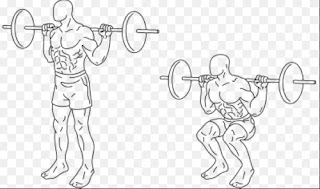Like a bilateral RDL the Single Leg RDL is hip hinge
exercise and the hip hinge is one of the key functional exercises everyone
should do along with squats, lunges, pushes, and pulls. The best way to do this exercise is barefoot
in front of a mirror where you can see your whole body throughout the entire
sequence of the exercise. Ideally you
should be on a firm and level surface as well.
This exercise challenges your entire body from head to toe
and particularly the feet because of the significant asymmetrical loading which
challenges you to compensate and stabilize!
This is very important because when we walk and run we spend much of our
time on one foot so this ability is critical for proper movement.
Start by facing the mirror standing on one foot with the
other leg flexed so your thigh is parallel with the floor and knee flexed to 90
degrees with hands on your hips. Look
in the mirror and make sure your hips are perfectly level and if not fix that!
Next, without moving the upper body extend the flexed leg down
and hinge forward at the hip of the standing leg by pushing the butt back (not by bending the knees down!). As your non-weight bearing leg passes the other leg you
should try to straighten it, and ideally you hinge forward at the upper body
while keeping your non-weight bearing leg and upper body in a straight line the whole time.
As you hinge try NOT to let your non-weight bearing hip drop and keep
your stance foot pointing directly forward with no angle. The stance leg should flex slightly but the
knee should NOT move forward much at all – rather you should “sit” back into the hinge at
the hip.
Pause when you reach at or near parallel with the floor with
your upper body and swing leg then smoothly return to standing and flex the
swing leg. Slower is harder AND better
and do NOT use any load at first.
Master the movement first!
10 repetitions on each side – do all 10 on each side one time per day
and you will see some amazing changes in your strength, balance and
athleticism!



